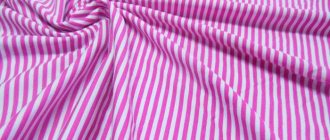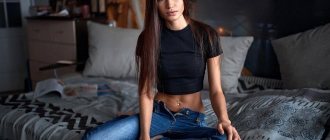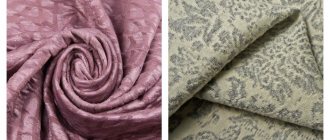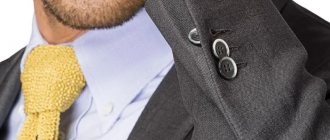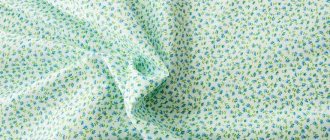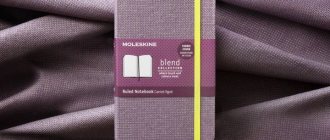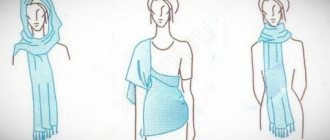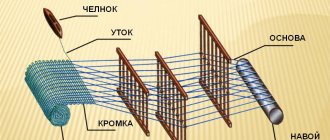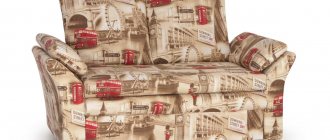Suit, business or festive, summer or warm. There are many requirements for this wardrobe item. Suit fabric must retain its beautiful appearance and shape for a long time, be durable and resistant to pilling and snags. The body must breathe and the fabric must be hygroscopic. Nowadays, the textile industry produces many types of fabrics. In this article we offer you a detailed description of various suit fabrics and their properties. We will tell you what are the important characteristics of fabric for a suit and the areas of application of the materials.
Wool
The composition includes an additive of synthetic components - elastane or polyester. This connection will provide the suit with resistance to wear, strength, and will help retain heat from the surface of the body.
Weaving of several types - twill, patterned and clothes.
Gabardine
A mixture of natural wool and cotton, linen or silk. Refers to expensive fabrics. A cheaper type of mixed fabric made of wool and polyester.
They retain heat less well, but are not inferior in strength and wear resistance.
The most commonly used in the clothing industry are:
1. Wool and elastane. Trousers made of this fabric will not stretch out at the knees and practically do not wrinkle.
2. Wool and viscose. Long-term deformation-resistant fabric with a diagonal rib on the surface.
3. Cheviot. Suit wool with viscose or cotton. Inexpensive, warm twill weave fabric.
Advantages of natural wool and blended fabrics:
- Good air circulation and at the same time long-term retention of heat from the body.
- Sweat and moisture are quickly absorbed and quickly evaporate.
- Low creasing, practically no creases or wrinkles form on the surface. Therefore, wool fabric for jackets and trousers is an ideal solution.
- Long term wear of items made from these materials.
- Good resistance to prolonged exposure to ultraviolet rays.
- The suits can withstand a large number of abrasion cycles.
- Do not lose surface quality and color brightness when washed with aggressive chemicals.
Types of suit fabrics
There are a large number of materials from which suits are made. The choice of fabric largely depends on when and where the clothing will be worn. The stores sell a variety of models for every taste and season. Materials differ from each other in quality and price. On sale you can see viscose, linen, lavsan, wool. Not only suits are made from them, but also dresses, skirts, trousers and other clothes.
Suits and jackets can be made from the following types of fabrics:
- Linen. This is a natural material from which summer clothes are often made. It allows air to pass through well, which is why it is valued. The disadvantage of the material is that it wrinkles quickly. To avoid such troubles, synthetics are added to flax.
- Denim. It holds its shape perfectly and is very dense. It is quite possible to sew suits from it. Jackets and children's clothing made from it are in great demand.
- Cotton. The material itself is a natural material, but viscose or man-made fibers are usually added to it to make it stronger.
- Wool. There are different types of weave: twill, compound, plain, and so on. Jackets and suits are most often made from this material.
- Stretch. This fabric can also be called wool, although elastane is also used in its production. It doesn't wrinkle much and is very durable.
- Gabardine. This is a fabric that has a relief on its surface. Thanks to him, the material does not lose its shape and at the same time is quite soft.
- Tweed. This is a very coarse fabric woven from wool. It is easily distinguished by its characteristic herringbone pattern. Tweed is used to make coats, hats and other clothes.
- Polyester. It makes very practical suits that do not wrinkle. The material has a long service life. It is based on polyester fibers, which give the fabric memory properties.
- Tiara. It contains elastane, thanks to which the material fits tightly to the figure. The tiar is a black smooth material.
Viscose
This suiting fabric is obtained by combining viscose with polyester fibers to give the fabric greater strength, elasticity and hygroscopicity.
Suits made from viscose are also easy to care for.
This fabric also has advantages:
- Light weight of the finished suit.
- There is no accumulation of static electricity.
- For clothes made from this fabric, a big plus is that pills do not appear on it after prolonged wear.
- The original brightness of the color is maintained after many washes.
Minuses
- This fabric is very demanding to care for and if the recommendations are not followed, it quickly becomes unusable.
- It wrinkles a lot.
- When stretched while wet, it quickly loses its shape.
- The color loses its brightness with prolonged exposure to sunlight.
- Shrinkage in size is allowed.
- In order to eliminate these disadvantages, impregnation of the fabric with special compounds is required.
Cotton
With synthetic components, dresses made from suit fabric fit the figure, allow the body to breathe and do not create discomfort in movement. Natural fabrics are rarely used when sewing suits, since cotton is not dense enough for suits and does not hold its shape.
pros
- Natural fabric. Will not cause allergies or skin irritation.
- Hygroscopicity.
- Durable fabric for a suit.
Flaws
- The need to treat things with special compounds to reduce creasing.
- The appearance of microorganisms in the tissue structure, which over time gradually destroy the tissue.
Synthetic
Sometimes suit fabric can consist entirely of artificial fibers. Several species are widespread.
| Name | Compound | Properties |
| Nicole | 68% is polyester 2% - elastane 30% - viscose | The fabric is dense, but elastic and soft. Easily paintable and UV resistant. In demand for sewing school uniforms, formal jackets and skirts. |
| Barbie | Spandex and polyester predominate. It is possible to add cotton and viscose. | The canvas hardly wrinkles and stretches well. It makes for elegant, figure-flattering outfits. It is not prone to staining and retains color for a long time. Excellent air permeability and heat retention. Suitable for sewing jackets, trousers, skirts, comfortable at any time of the year. |
| Pikachu | Up to 30% viscose, elastane, polyester, spandex. | The material can be dense (wrinkle-resistant winter suits are made from it) and light (summer jackets, blazers). Depending on the composition, it can be elastic or, conversely, have poor stretch. The main qualities are softness and strength. |
Note: In the USSR, only one synthetic material was used in production - Vorsolan. It consisted of 100% polyester, had a small pile, and was distinguished by a muted shine. Today, improved varieties are presented on the textile industry market.
Barbie
So what kind of fabric is Barbie? Excellent draping fabric with a rough surface and crepe weave threads. Elastic, polyester or viscose is also added to the composition. The material is dense and does not crumble. Shimmers slightly when moving.
Due to its dense double-sided surface, Barbie material is often used in tailoring costumes.
Advantages
- Things are neat and look expensive.
- The fabric is dense and strong.
- Doesn't break, doesn't wrinkle.
- Fits beautifully to the figure. Barbie fabric stretches very well.
- Resistant to snags.
- Does not allow moisture to pass from outside.
Minuses
- Low air infiltration.
- Does not withstand prolonged exposure to sunlight.
- The item may become deformed if washing instructions are not followed.
Wool suit material
Suit wool , from which clothes are made, comes in several types, depending on the yarn used:
- thin;
- semi-thin;
- semi-rough.
In this case, wool can be of two categories: pure and semi-wool. In the first case, its composition cannot contain more than 5 percent elastic fibers. In the second case, to give the material elasticity or reduce its cost, cotton or synthetics are added to the composition.
The fabrics also differ from each other in the way they are dyed . There are such types of wool as:
- Melange. It is made from threads of different shades.
- Multicolored. In its production, fibers of different colors are used. A special pattern is formed from the weaves on the surface of the fabric.
- Plain painted. Here the material is monochromatic, and the front and back sides do not differ from each other in shade.
Linen
Since the fabric has a loose structure and flowability, it is used when sewing lightweight flight suits. The body in linen clothes breathes and does not sweat. Polyester added to the fabric helps eliminate severe creasing and make linen clothing easier to care for.
Linen-gabardine
Unlike all-natural flax, this mixed version wrinkles less and retains its original shape and attractive appearance well. Often used in sewing summer suits.
Cashmere
Very thin material, twill weave. The finest premium quality mountain goat yarn. Cashmere items are never cheap. This material has many advantages.
- Things are almost weightless, thin. A cashmere sweater can easily be threaded through a small ring.
- Environmental friendliness of the material. Unlike synthetic analogues, dust mites will not appear in the structure and clothing will not cause allergic reactions on the skin.
- Cashmere, despite its thinness, is very dense and resistant to deformation.
- Suit wool has a low level of thermal conductivity, which means that the body will not freeze and the skin will breathe.
- Since the material is very thin and soft, things do not pinch or cause discomfort when worn.
Flaws
- After prolonged wear, pellets appear in places where surfaces touch. Therefore, it will be necessary to periodically clean the areas under the arms and on the belt.
